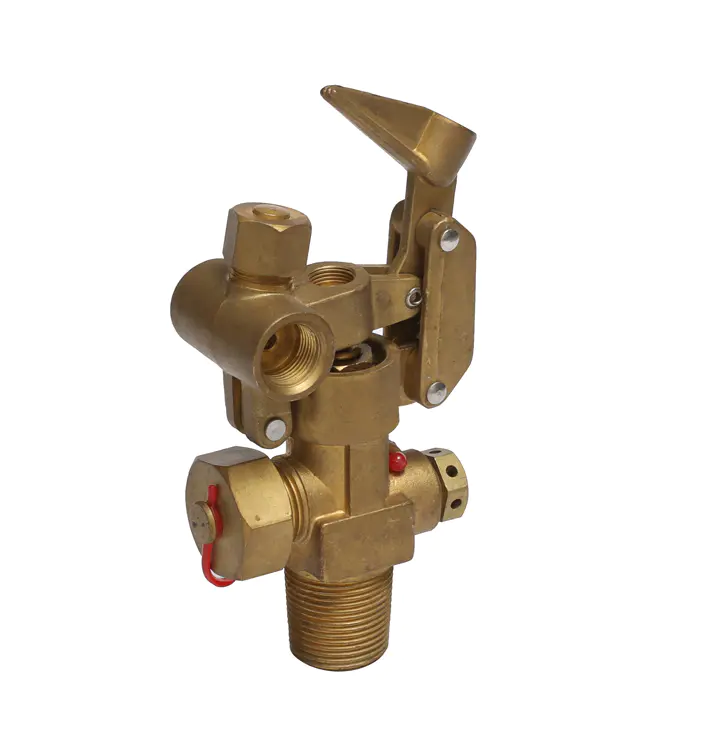Inlet Thread: M30x1.5
Outlet Thread: G1/8x28
Gauge Connection Thread: M10x1x12.5
Dip Tube Thread: M16x1.5
Pressure Mpa: 2.3-2.8
Check Valve: Valve core
A fire sprinkler system, commonly known as an "automatic sprinkler system," is one of the most important passive fire protection facilities in modern buildings. Its core function can be summarized as: automatically detecting, controlling, and extinguishing initial fires, buying valuable time for evacuation and fire department rescue.
Content
This is the sprinkler's most important and direct function. It requires no human intervention or electricity. When a fire occurs and the ambient temperature rises to a certain threshold (usually 68°C or 93°C, depending on the environment), the glass bulb in the sprinkler head will rupture due to heat, or the fusible metal component will melt, thus opening the valve. Water will then spray directly from the sprinkler head, precisely targeting the fire source for extinguishing.
Even in certain situations (such as excessively large fires or excessive fuel), where sprinklers cannot immediately extinguish the fire completely, they effectively:
Reduce fire temperature: The sprayed water absorbs a significant amount of heat, rapidly lowering the temperature of flames and smoke.
Wet combustibles: Prevents the fire from spreading to surrounding unburned materials.
Create localized isolation: The dense water curtain can isolate the flames to some extent, slowing the spread of the fire.
This creates a crucial "safe time window" for the evacuation of people inside the building.

Buying time for evacuation: By controlling and extinguishing initial fires, sprinkler systems effectively prevent fires from developing into flashover in a short time, providing more time for safe evacuation.
Significantly reducing property damage: Compared to an uncontrolled large fire, the water damage caused by a sprinkler system is usually much smaller. It only activates sprinklers in the area where the fire originated, rather than all sprinklers throughout the building, thus minimizing the damage.
The water mist sprayed from the sprinkler heads can:
Settle smoke particles: making escape routes clearer for trapped individuals.
Dilute toxic gases: water can dissolve and flush away some of the toxic and flammable gases produced by a fire, improving the fire scene environment.